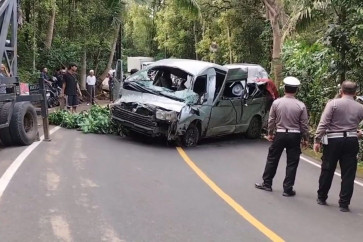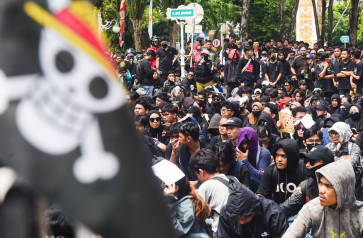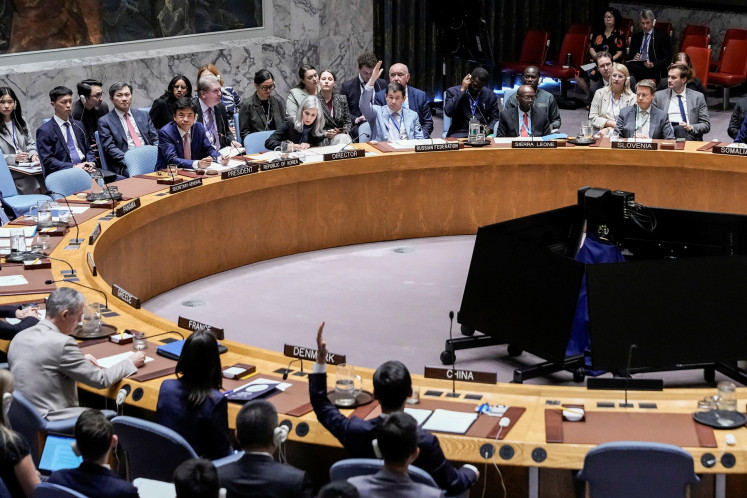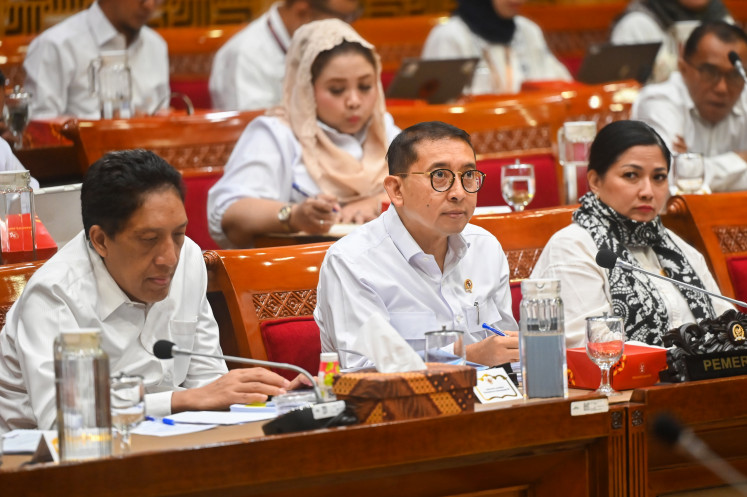Popular Reads
Top Results
Can't find what you're looking for?
View all search resultsPopular Reads
Top Results
Can't find what you're looking for?
View all search resultsPutting Trowulan into perspective
Winning concept: The promised Trowulan open museum will allow a bird’s-eye perspective through which one can marvel at the scale and ingenuity of the ancient Majapahit
Change text size
Gift Premium Articles
to Anyone
W
span class="caption">Winning concept: The promised Trowulan open museum will allow a bird’s-eye perspective through which one can marvel at the scale and ingenuity of the ancient Majapahit. Courtesy of Han Awal and Partners
Raffles dubbed it the pride of Java, archeologists call it the nation’s historical identity, yet the authorities often only see it as a mere tourism commodity.
Now, after heated controversy over the construction of the Majapahit Information Center in the country’s largest archaeological site, Trowulan, one architect is offering a more careful solution.
Think outside the box. This will not be a four-walled museum where glass-boxed artifacts are the only things visitors will see.
The promised Trowulan open museum will allow a bird’s-eye perspective through which one can marvel at the scale and ingenuity of the ancient Majapahit city.
A recent architectural design competition chose the concept offered by Jakarta-based architect Yori Antar, a set of knock-down structural modules standing on a traditional foundation that has long in use in use in the country.
“It’s a project that requires more sensitivity. We need to set aside our egos and build not an architectural piece, but instead put a semi-permanent installation to allow visitors to observe the site,” Yori says.
Building a museum atop an archaeological site is a tricky business, especially when it involves a
top-grade site where one can find traces of the past even at a depth of several inches.
“The umpak foundation that has been long used in our traditional structures is suitable not just in this case. It doesn’t require digging deep into the ground, risking damage to the historical site, yet it provides the much-needed load transfer,” Yori adds.
“For me, even a modern structure can synergize with an ancient archaeological site.”
Courtesy of Han Awal and Partners
Trying to avoid merely copying the terracotta architecture of Majapahit, Yori’s team – comprising architects Adi Purnomo, Danny Witjaksono and several others from the architectural firm Han Awal and Partners – chose to create viewing spaces in between the classic modern joint-and-strut system based on the excavation modules.
“It’ll be a purely structural work constructed as light as possible with perhaps a polycarbonate roof to shelter the visitors’ path,” Yori says.
The basic concept of the design is to build a sheltered space where it is needed, and deconstruct it and move it elsewhere when the site requires further archaeological excavation.
“It’s practical and can be easily constructed and moved around according to what’s needed,” says Bambang Eryudhawan, a member of the jury for the selection competition.
“It’s kind of urgent to start building the structure to protect the open brick-structure sites.”
He adds a master plan designed by Semarang-based architect Andi Siswanto will complement the open museum, which is scheduled to be built after an additional site outside the ancient one is finished.
It is hoped Yori’s design, Back to the Future, will be able to shelter several spots in Trowulan that have been dug open and damaged due to the reckless construction of the initial Majapahit Information Center begun last year.
It was also the controversial project that shined the spotlight back again on a historical site dating back to the 13th century. It was an issue the public had wrongfully blamed solely on architect Baskoro Tedjo, who was appointed to develop the initial design.
Led by the Culture and Tourism Ministry, last year’s controversy over the construction of a museum in Trowulan actually shed a light on how the authorities were still trapped inside the conventional paradigm of revitalizing an archaeological site through tourism-generated economy.
There’s nothing wrong with tourism. It has been one of the most common ways to put traces of the past into today’s living activities.
But digging concrete foundation deep into a ground that hides valuable artifacts and hoping to create a landmark on top of it is far from being wise. This is not Bilbao. Trowulan needs more than a mere grand structure to reveal its grace and help boost the local economy.
By category, the remnants of the Majapahit kingdom scattered over a 100-square-kilometer site are different from other archaeological sites in the country. They consist not of grander monuments like Borobudur, but instead something greater than that: traces of an ancient city.
Despite earlier findings by Raffles in the 19th century, it was not until the late 1970s that attention poured onto the small town, a three-hour drive from Surabaya.
A series of excavations revealed coins, pottery, Chinese ceramics, canals, bones and wells. All were proof of the massive scale of the settlement, an actual urban heritage that could portray part of the civilization that existed centuries before modern life.
Mentioned in Negarakertagama, an ancient script from the 14th century by Prapanca, the Trowulan compound is more than just a royal palace. Though the center of the complex is the red-brick palace, the overall heritage consists of a set of settlements buried under the volcanic debris of Mount Kelud.
Several landmarks that have been fully excavated are the Segaran Pool, Tikus Temple, the palace gate Bajang Ratu and the compound gate Wringin Lawang. Remains of brick floors and walls of houses, homes that already had proper wells and drains, are found outside the palace compound.
“We can learn a lot from what is left. Look at how they built brick by brick and applied a system of nailing and locking the structure,” Yori points out. “This is a very valuable heritage.”
Socio-politically, Majapahit and its remains are more than just ancient physical temples. The ancient kingdom founded by Raden Wijaya laid the foundation for the concept of Nusantara, a state-like entity that once stretched over an area more vast than modern-day Indonesia.
Yet romanticizing a glorious past is not what is needed. Locals living in and around Trowulan need more than just memories and flocks of tourists gazing at their ancestral masterpiece.
The Trowulan open museum is perhaps just a way to reopen the discussion. How can we put the past in the future for good?











